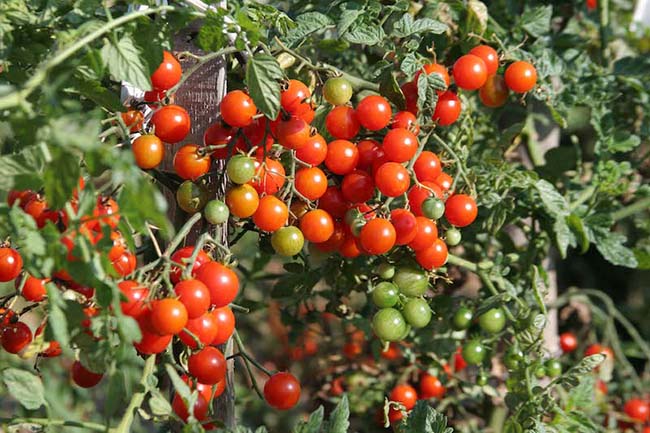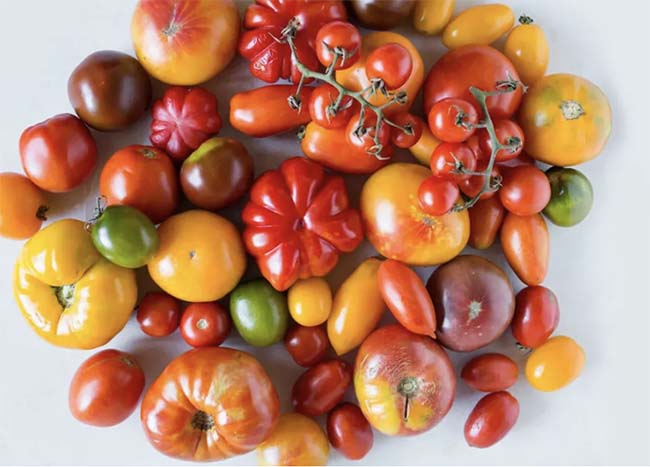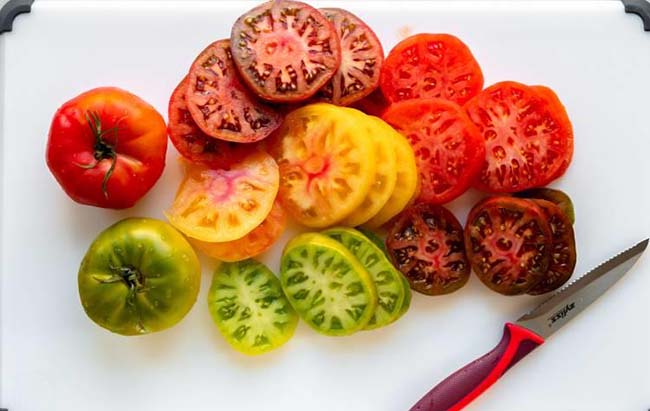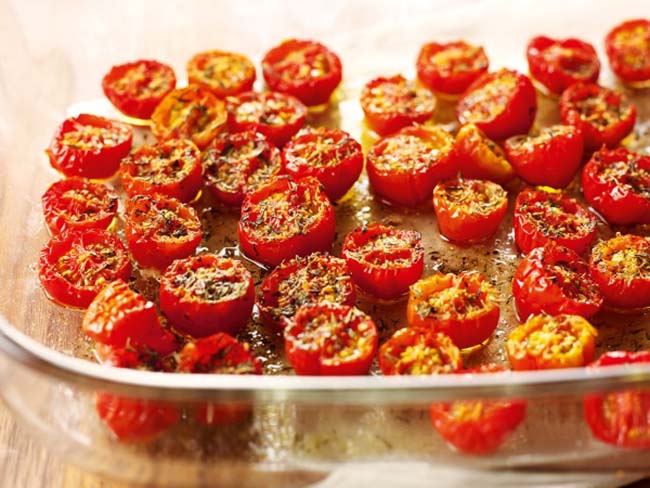Tomatoes are a staple in many kitchens, and for good reason. They are versatile, flavorful, and packed with nutrients. But what makes tomatoes taste so great? We’ve done some research and have found that there are a few key factors that contribute to the delicious taste of this beloved fruit.
The Science of Flavor
The Role of Sugars and Acids
One of the most important factors in the flavor of tomatoes is the balance between sugars and acids. Tomatoes contain both natural sugars and acids, and the ratio of these two compounds can greatly affect their taste. A tomato with too much acid will taste sour, while a tomato with too much sugar will taste overly sweet.
The ideal balance of sugars and acids in a tomato can vary depending on its intended use. For example, tomatoes that are intended for use in sauces or other cooked dishes may have a higher acid content, as this can help balance out the sweetness that develops during cooking.
The Importance of Aroma
Another important aspect of tomato flavor is their aroma. Tomatoes contain a variety of volatile compounds that contribute to their scent, and these compounds can greatly affect their overall flavor. In fact, studies have shown that the aroma of a tomato can be just as important as its taste when it comes to perceived flavor.
Some of the compounds that contribute to tomato aroma include linalool, which has a floral scent, and beta-ionone, which has a fruity aroma. These compounds can vary depending on the variety of tomato, as well as factors such as ripeness and growing conditions.
The Influence of Texture
Finally, the texture of a tomato can also contribute to its overall flavor. Tomatoes that are too firm or mealy can be less enjoyable to eat, while those that are soft and juicy can be more satisfying. Additionally, the thickness of the tomato skin can affect its flavor, as thicker skins can be more bitter.
When selecting tomatoes for different uses, it’s important to consider their texture as well as their flavor. For example, tomatoes with a firmer texture may work well for slicing and eating raw, while mealy tomatoes are good candidates for sauce.
Factors That Affect Tomato Flavor
Growing Conditions
When it comes to tomato flavor, the growing conditions play a significant role. The soil, climate, and amount of sunlight the plants receive can all affect the taste of the tomatoes. We have found that tomatoes grown in nutrient-rich soil tend to have a better flavor. Using organic fertilizers like compost or manure can help improve the soil quality and enhance the flavor of the tomatoes.
Tomatoes also need plenty of sunlight to develop their flavor. If they don’t receive enough sunlight, they may taste bland or have a sour taste. The ideal temperature for growing tomatoes is between 70-80 degrees Fahrenheit. If the temperature is too hot or too cold, the flavor of the tomatoes may be affected.
Ripeness and Storage
The ripeness of the tomatoes also affects their flavor. Tomatoes that are picked too early may not have fully developed their flavor, while overripe tomatoes may have a mushy texture and a less desirable taste. We recommend picking tomatoes when they are fully ripe and have a deep red color.
Proper storage is also essential for maintaining the flavor of tomatoes. Tomatoes should be stored at room temperature and away from direct sunlight. Refrigerating tomatoes can cause them to lose their flavor and become mealy.
Cooking and Preparation
The way you cook and prepare tomatoes can also affect their flavor. Overcooking or undercooking tomatoes can alter their taste. We suggest cooking tomatoes just until they are tender but still retain their shape.
Adding salt to tomatoes can enhance their flavor by bringing out their natural sweetness. Other herbs and spices like basil, oregano, and garlic can also complement the flavor of tomatoes.
Varieties of Tomatoes
Heirloom Tomatoes
Heirloom tomatoes are known for their rich, complex flavors and unique appearance. These tomatoes are grown from seeds that have been passed down for generations and are not genetically modified. They come in a wide range of colors, shapes, and sizes, and each variety has its own distinct taste. Some popular heirloom tomato varieties include Brandywine, Cherokee Purple, and Green Zebra.
Heirloom tomatoes work well for salads, sandwiches, and eating raw. They are also great for making sauces, as their rich flavor adds depth to any dish.
Hybrid Tomatoes
Hybrid tomatoes are created by crossbreeding two different tomato varieties. This process creates a tomato that has the best traits of both parent plants, such as disease resistance, high yield, and uniform size. Hybrid tomatoes come in a variety of colors, shapes, and sizes, and they tend to have a longer shelf life than heirloom tomatoes.
Hybrid tomatoes are great for cooking, as their uniform size makes them easy to slice and dice.
Cherry Tomatoes
Cherry tomatoes are small, bite-sized tomatoes that are sweet and flavorful. They come in a variety of colors, including red, yellow, and orange, and are often used in salads, as a snack, or as a garnish. Cherry tomatoes are also great for roasting, as their small size makes them easy to cook.
Cherry tomatoes are great for making salsa, as their small size makes them easy to chop.
Ways to Enhance Tomato Flavor
Adding Salt and Pepper
Salt and pepper are the most basic seasonings that can bring out the natural flavors of tomatoes. Sprinkle a pinch of salt and a dash of freshly ground black pepper on your sliced tomatoes to enhance their taste.
Using Vinegar and Lemon Juice
Acidic ingredients like vinegar and lemon juice can brighten the flavor of tomatoes. Add a few drops of balsamic vinegar or a squeeze of lemon juice to your tomato salad or sauce to give it a tangy kick.
Pairing with Other Ingredients
Tomatoes pair well with a variety of ingredients that can enhance their flavor. Here are some ideas:
- Fresh herbs: Basil, oregano, thyme, and rosemary complement the taste of tomatoes.
- Cheese: Mozzarella, feta, and Parmesan cheese add richness and depth to tomato dishes.
- Olive oil: Drizzle some extra-virgin olive oil on your tomatoes to add a fruity, nutty flavor.
- Garlic: Roasted or sautéed garlic can add a savory note to your tomato-based recipes.
Experiment with different combinations of ingredients to find your favorite flavor profile.
That’s it for our section on ways to enhance tomato flavor. Try out these tips and let us know what you think!



